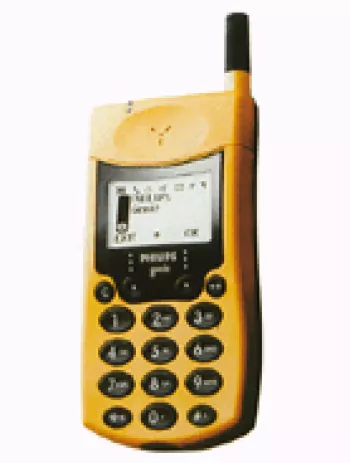
Overview of Philips S660
The Philips S660 is a classic feature phone, launched in September 2006, and has since been discontinued. It was a typical product of its era, aiming to provide basic communication and some multimedia functionalities in a compact form factor.
Design and Build
The Philips S660 is designed with simplicity and functionality in mind. The phone has dimensions of 101 x 43 x 18 mm and weighs just 83 grams, making it a lightweight device that easily fits into a pocket. It uses a Mini-SIM and features a body that, while basic, served its intended purpose well during its time.
Display
The device has a CSTN display supporting 65K colors. With a screen size of 1.5 inches, it offers a resolution of 128 x 128 pixels, which gives a pixel density of approximately 121 ppi. Though minimal by today's standards, it was adequate for displaying text and simple graphics, being typical of feature phones of its era.
Camera Capabilities
The Philips S660 is equipped with a single VGA camera, with a resolution of 0.3MP. While not suitable for high-quality photography, it could capture basic images and videos and served the basic needs for users wanting to document moments using their phones.
Memory and Storage
The phone comes with 128MB of internal storage. This was substantial given the period it was released, capable of storing contacts and a small amount of multimedia content. However, it lacks a card slot, which limited users to the built-in storage capacity.
Network and Connectivity
The Philips S660 supports GSM technology, operating on 2G bands at GSM 900 and 1800 frequencies. It provided basic GPRS connectivity but did not support EDGE, WLAN, or Bluetooth technologies. This limited its internet capabilities to basic functions such as WAP 2.0/xHTML browsing.
Audio and Multimedia
In terms of audio, the phone supports polyphonic and MP3 ringtones. However, it lacks a loudspeaker and a 3.5mm headphone jack, so external audio options were limited. It did provide vibration alerts as an alternative notification method.
Battery Life
Equipped with a removable Li-Ion 1000 mAh battery, the Philips S660 promised a standby time of up to 250 hours and a talk time of up to 5 hours. This performance was standard for feature phones at the time, ensuring that users could rely on their phones throughout the day without frequent recharging.
Features and Applications
The phone provided basic SMS, EMS, and MMS messaging capabilities, allowing for both text and multimedia messaging. It also included three pre-installed games, showcasing the limited but enjoyable entertainment features available. With its simple sensor array and lack of Java support, additional applications beyond the standard features were not feasible.
Miscellaneous Features
The Philips S660 was available in a classic black color. While customization options were limited, the sleek black design helped it maintain a professional appearance suitable for everyday use.
Conclusion
Overall, the Philips S660 represented a solid entry into the feature phone market at the time of its release. Its design and functionality catered to those needing a basic, reliable phone for communication. Despite being discontinued and outdated by modern smartphone standards, it stands as an example of early mobile technology, outlining the progress made in the mobile industry over the years.
Key Features of Philips S660
- Lightweight design, weighing just 83 g.
- Compact dimensions of 101 x 43 x 18 mm.
- CSTN display supporting 65K colors.
- Internal memory capacity of 128MB.
- VGA main camera with video capability.
- Support for SMS, EMS, and MMS messaging.
- WAP 2.0/xHTML browser for internet access.
- Removable Li-Ion 1000 mAh battery.
- Standby time up to 250 hours.
- Talk time up to 5 hours.
- Three embedded games.
Disadvantages of Philips S660
- The phone uses outdated GSM technology only.
- It lacks EDGE support for faster data speeds.
- The display is quite small at 1.5 inches with low resolution (128 x 128 pixels).
- No card slot for expandable memory.
- Limited internal memory of 128MB.
- VGA camera lacks quality and advanced features.
- Does not feature a front-facing camera for selfies.
- Absence of a loudspeaker.
- Lacks a standard 3.5mm headphone jack.
- No Bluetooth or WLAN for wireless connectivity.
- Proprietary USB limits connectivity options.
- No built-in GPS feature.
- Absence of a built-in radio.
- Cannot run Java applications, limiting software expansion.

View Also
More Phones
All Rights Reserved +14266 Phones © Mobilawy 2025

























